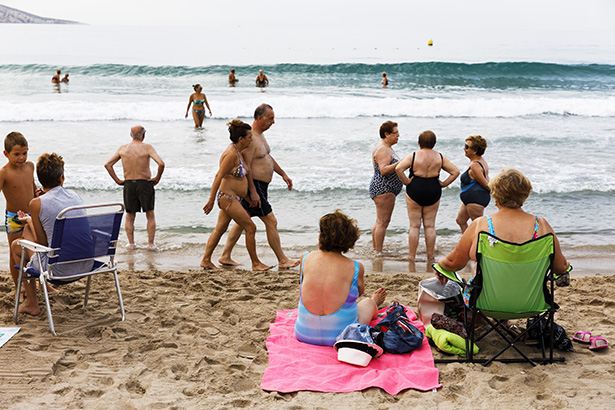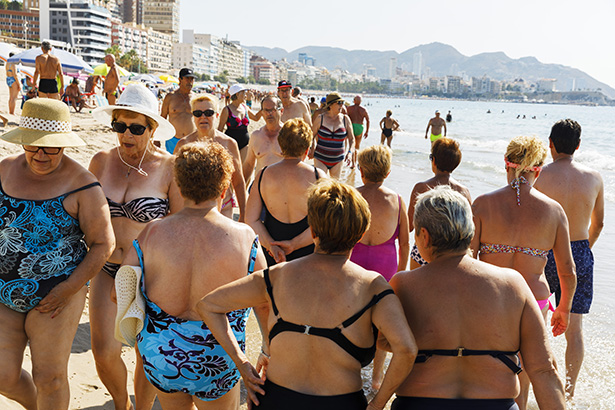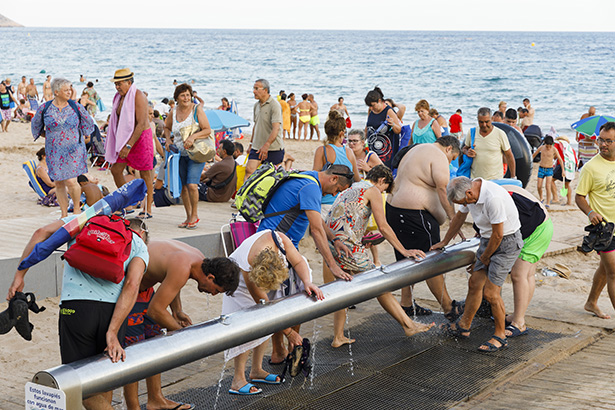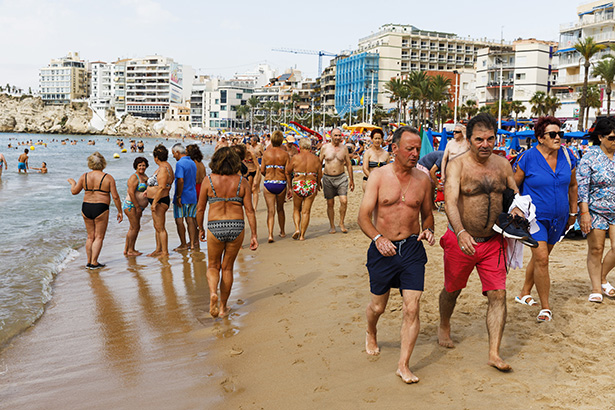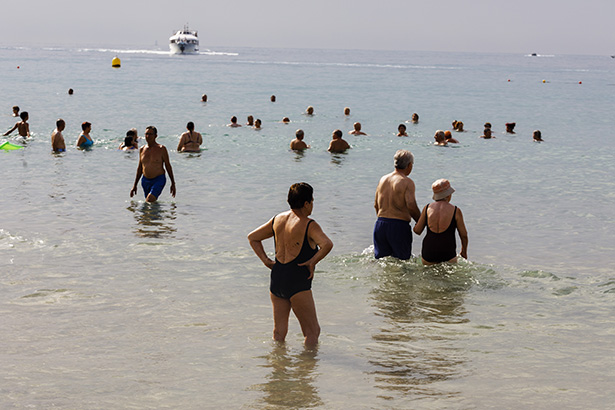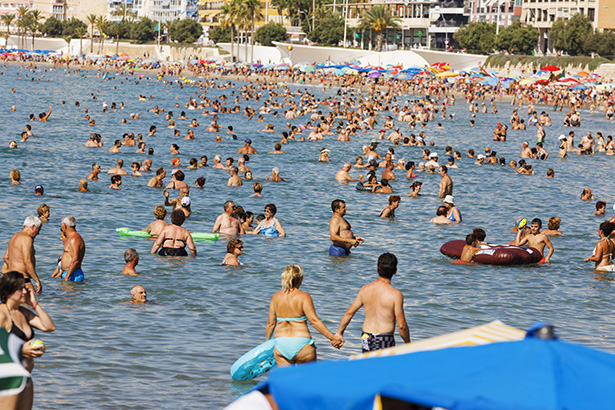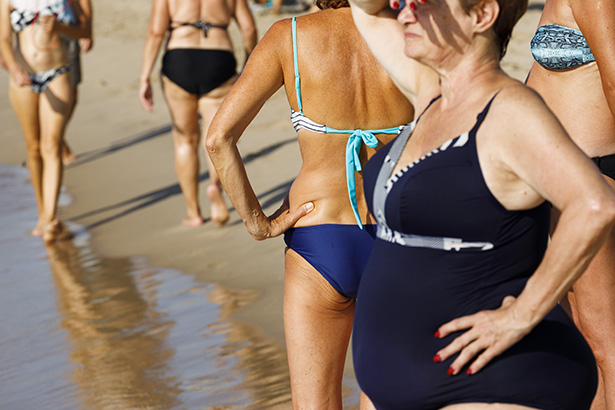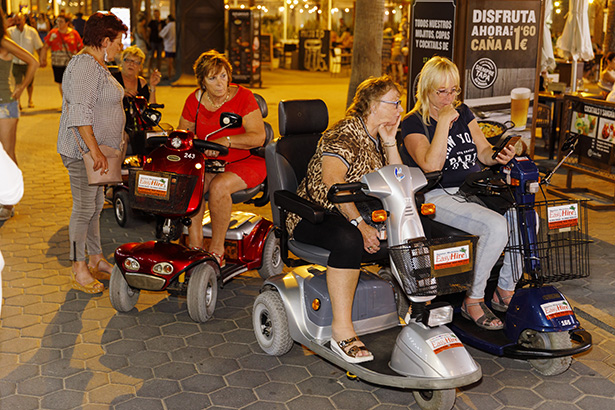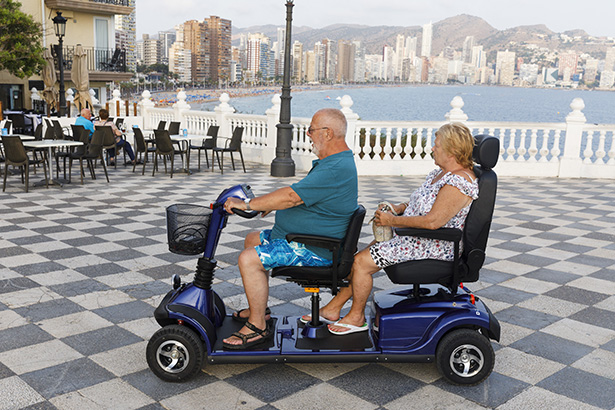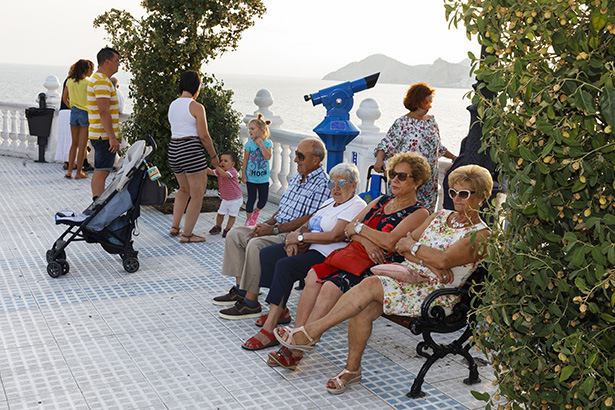Benidorm
Text by Susie Parr, photographs by Martin Parr.
The commonly held misconception that Benidorm is an enclave of British tourism was demonstrated in 2018, when a woman complained to Thomas Cook that her holiday had been ruined by the number of Spanish staying at her hotel. ‘Could they not find somewhere else to go on holiday, was her plaintive query. In fact Spanish holiday makers far outnumber the Brits and other Northern Europeans at the resort.
The September beach demographic is clear. Older people, in their 70s, 80s and 90s, congregate in tens of thousands on the sand. Most arrive well equipped for a day at the beach, settling down with chairs and parasols, newspapers and crosswords. At the water’s edge, along the entire length of Benidorm’s two main beaches, a strip of hard flat sand makes for easy walking. From early morning, it is thronged with elderly folk taking exercise before the sun becomes too intense. While a few walk alone, most promenade in couples or small groups; the hum of their conversation providing a gentle soundtrack.
Benidorm’s gently shelving sand gives easy access to the warm, clear water. Even those with dodgy hips and newly replaced knees can easily cool off. They enter the water clutching walking sticks, gripping the arm of husband, son, or friend. The chat continues in the water, as people bob like jetsam, or stand waist deep, heads together, engrossed in talk. Towards noon, the water is thick with bodies. The low buzz of countless, endless, ongoing conversations intensifies as more people enter the water, the heat builds and cumulus clouds gather over the mountains. There is of course, much to talk about: ailments, operations, deaths, money worries, wayward sons, unruly grandchildren, difficult neighbours.
Standing in the shallow water in front of the shaded ‘playas accesibles’ area, where wheelchairs are parked in orderly rows, a group of women break through the hum of conversation by singing a popular song. The chorus taken up by the countless elderly bathers standing nearby, a spontaneous watery sing-song capturing the collective spirit of this most Spanish of beaches
One striking feature of Benidorm’s beach society is the fact that the Spanish seem unabashed by the flab, sag and wrinkles of old age. Many older women wear skimpy bikinis or even go topless, literally comfortable in their own skins. This is particularly arresting given that – back in the 50s – Benidorm was subject to a ban on bikinis instigated by the church and supported by Franco. Fascist and Catholic decorum was overturned by the mayor, Pedro Zaragoza, who was instrumental in developing the resort’s infrastructure with his vision for mass tourism. In 1953 he travelled to Madrid on his Vespa scooter, appealing directly to Franco to allow the pale-skinned northern holidaymakers to wear whatever they wanted. Outfaced by the zealous mayor, Franco backed down. Benidorm rapidly became, and remains, Spain’s largest seaside resort.
By 2pm the Spanish have mostly abandoned the beach, headed for lunch in one of the many pinxtos and tapas bars (outlets line an entire alley in the old town), followed a siesta. They will return after 5.30, resuming their station on the sand and picking up the threads of conversation. Northern Europeans slog the afternoon out, splayed on towels and sun beds, tattooed flesh broiling. Many Brits return to Benidorm year on year, joining encampments of old friends on the sand and cyclically re-colonising their favoured British-run bars. Many older people winter here as it is warmer and cheaper than the UK. Many die here, far from friends and family, unable to afford to live at home.
British of all ages come to Benidorm and September sees an influx of the middle aged, taking advantage of lower prices now that the schools have gone back. Members of this cohort seem to take a particular shine to the mobility scooters that can be hired for a few euros a day. Single and tandem motorised buggies save the trouble of walking long distances or uphill in the heat. While some scooter users are clearly aged, infirm or disabled, many are simply overweight or unfit, their poor condition not improved by smoking. Driven with elan by an able bodied, relatively young person, the mobility scooter becomes something of a status symbol, whirring up the narrow lanes of the old town and along the tree-lined promenade.
At the water’s edge, crowds of Spanish pensioners stream back and forth, passing each other in the soft morning light. The thought must cross the collective mind that in ten years time, these early walkers will have disappeared, their footprints will be washed away, and their place on the sand taken by the next generation of the old.

